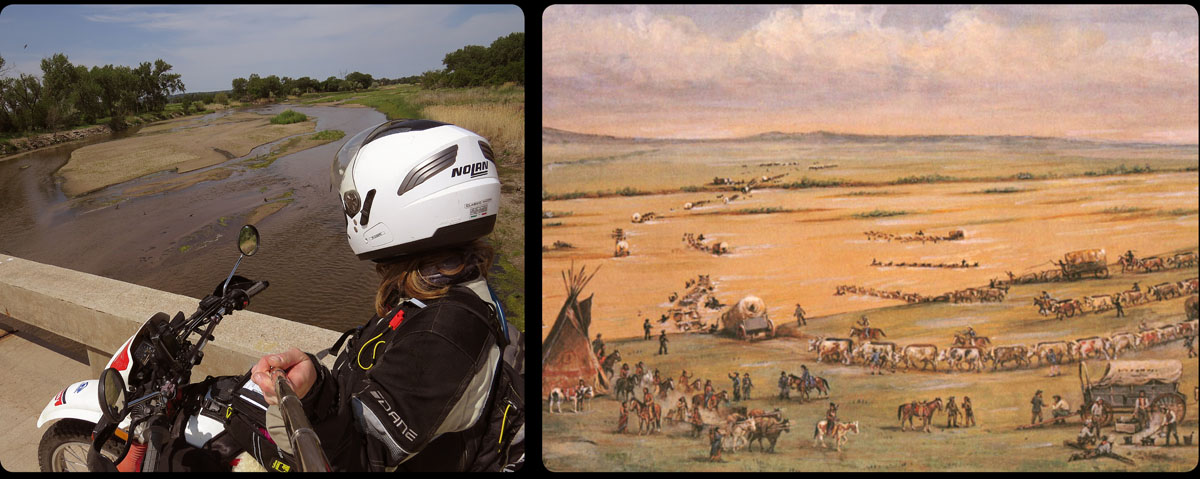For two days in a row now I’ve been following the Platte River, or Kíckatus in Pawnee language. The emigrants stumbled upon the river on their way to the north, and they would keep following it well into Wyoming: the Mormons on the north side, most of the rest of the emigrants on the south bank.
The Platte (from French ‘platte’, or flat) is indeed a very shallow river. ‘A mile wide and an inch deep’, is how one emigrant described it. Another traveler wrote that it is ‘too thick to drink, and too thin to plow’. Somebody reported that the Platte was so sandy that it seemed like the river was flowing upside down.
At the town of North Platte it looks as if the river splits, but actually the North and South Platte join here; indeed the river flows to the east. I keep following the trail to the west, along the southern branch; the South Platte.
Today the river isn’t as impressive as it used to be. Gregory Franzwa, who made an elaborate study of the trail, wrote: ‘One is not able to see a damned thing because of today’s abundance of cottonwoods and the scarceness of water in the South Platte’.
For me it is the same as it was for Franzwa in 1972; I hardly see anything of the river, there always seems to be a green wall standing between myself and the river. In the days of the emigrants the banks were empty and devoid of trees. Only on the many islands anything other than grass would grow. The Indians were in the habit of setting fire to the prairie every once in a while. That would keep the vegetation low and made it easier for them to hunt game.
And there were the bison who lived in enormous herds on the prairie. They used to drink at the Platte and in the process crushed anything that was trying to grow on the banks.
The river was very shallow, but it was not without danger to cross it with these heavily loaded wagons; in the sandy bottom of the river, treacherous spots of quicksand would appear. If the draft animals would stop, or even hesitate, the wagon wheels would unrelentingly sink into the sand.
The painter William Henry Jackson made a painting of the crossing from a sketch he made in 1866, and on this painting the river is certainly a lot more impressive than the wimpy stream I got to see every now and then.
Today California Hill and Windlass Hill: the first two serious challenges for the emigrants and their oxen.

